#employee performance management software
Text
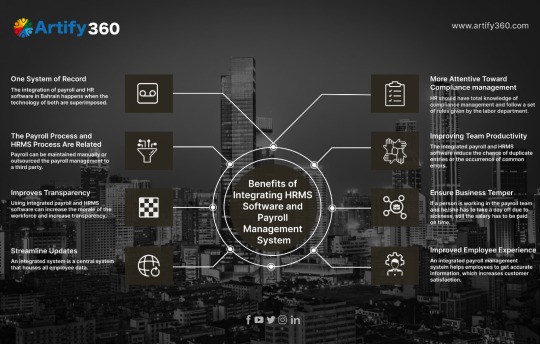
"Simplify your HR and payroll processes and achieve greater efficiency with integrated HRMS software and payroll management system in Bahrain."
#Artify360 is the top hrms software for Bahrain that will help in the human resources management without compromising the quality of your wo#leave management software#attendance management software#employee performance management software#payroll software#and recruitment management software in an all in one HRMS software exclusively designed for Bahrain.
0 notes
Text
Which Is The Best Leave Management Software For Your Business And How Can You Use It?
Organizations can significantly optimize their leave approval workflow with the use of leave management software. It makes it simple for staff members to request a leave of absence and for managers to grant or deny such requests by the company's leave policy.
This blog provides valuable information on the best leave management software for your business and how you can use it. Read further to know more.
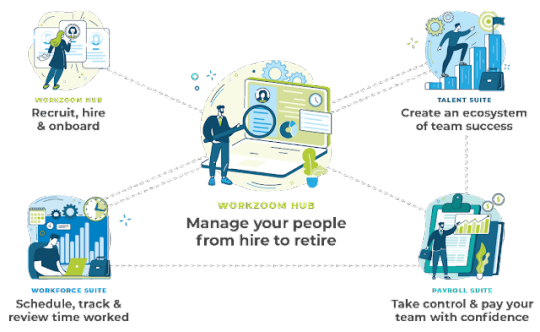
What Payroll And Benefits Solutions Your Business Can Get?
One of the many varieties of HR management software is payroll and benefits solutions. It covers a lot of grounds, such as offering an effective dashboard for employee benefits or helping with various types of benefits tracking.
This software helps you to eliminate paper-based enrollment, and stay on top of qualifying work and life events. With the help of this software, employees can select their plans and coverages.
You can align your Payroll Software with your Financial System to get the maximum analysis capability.
How Can You Use Employee Performance Software?
Employee Performance Software, which is the next generation of HR software, assists businesses in meeting contemporary objectives such as constant performance monitoring and employee feedback and support. Software for performance management can monitor team members' contributions as well as their capacity to achieve goals, linking performance to the bottom line of the firm.
What Is A Leave Of Absence Management Software For Your Business?
The leave of absence management software is also used to identify absenteeism patterns, if any, and remove the root of the problem as soon as possible. The tool aids in maintaining a workplace where workers don't feel overworked or overworked, two important contributors to absence. It keeps the office climate cheerful.
Which Is The Best Employee Performance Management Software To Be Used For Your Business?
Workzoom provides the best employee performance management software to be used for your business. It Consolidates and automates your people management so you can shift your focus from administration and get back to work. Our software helps growing businesses consolidate and automate their people management for a fraction of the time and cost of our competitors.
Our consolidated formula helps you save time and money by getting you the most out of your people. We incorporate best practices in all areas of people management so you can save time and money.
#leave management software#payroll and benefits solutions#Employee Performance Software#leave of absence management software#employee performance management software
0 notes
Text
Best performance management software -Savvy HRMS
Is appraisal process streamlined properly in your organization if not then Savvy HRMS help facilitate the accomplishment of individuals and corporate goals with help of performance management software. The software help managers to conduct quick and fare appraisal process within a short period of time. The software is cloud-based and helps to know the performance of the organization and the individual employees.
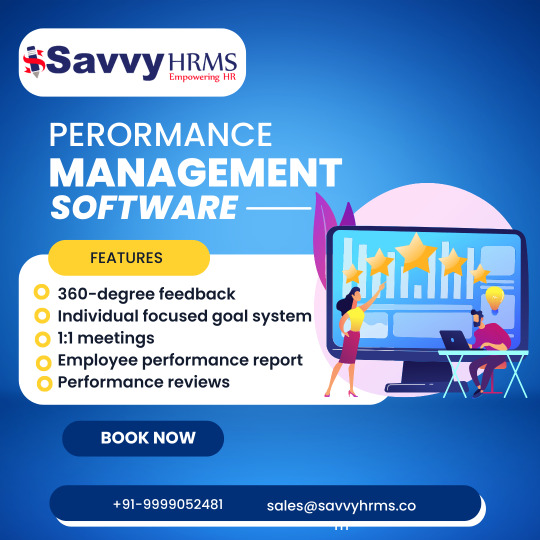
#360 degree performance management software#employee performance management software#online performance management software#performance management software for small business
0 notes
Link
Monitor and manage employees’ performance through the best performance management software. Find the list of top software to improve employee performance
#employee performance management tools#employee performance management software#employee performance management systems#top employee performance management solutions
0 notes
Text
Looking for the best performance management software, work management software, employee attendance app and daily task tracker & management software? Sign up with TrackHR now & get a free one month trial, TODAY
2 notes
·
View notes
Text
Balanced Scorecard Framework: A Catalyst for Effective Enterprise Performance Management
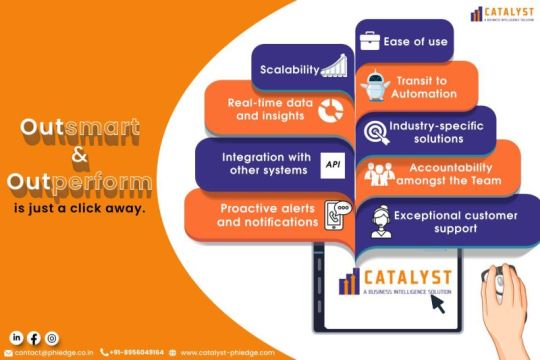
The term "catalyst" implies a substance that accelerates a reaction without being consumed itself. Similarly, the Balanced Scorecard Framework acts as a catalyst within the realm of EPM by accelerating the alignment of organizational objectives and strategies with actionable initiatives. Here's how:
1. Clarity in Objectives and Priorities
The Balanced Scorecard Framework begins with the identification and articulation of strategic objectives across the four perspectives. This process ensures that objectives are specific, measurable, aligned with the organization's mission, and interconnected. By involving key stakeholders in this process, organizations achieve clarity and consensus regarding what matters most.
2. Cascading Objectives Throughout the Organization
The Catalyst concept resonates strongly with the Balanced Scorecard's ability to cascade objectives and strategies throughout the organization. When objectives are clearly defined and communicated, they act as a catalyst for alignment. Each team and individual understands their role in contributing to the achievement of strategic goals.
3. Performance Measurement and Accountability
The framework's perspectives extend beyond financial metrics, encouraging a holistic view of performance. This enables organizations to measure progress and success across multiple dimensions. By establishing key performance indicators (KPIs) for each perspective, the Balanced Scorecard acts as a catalyst for accountability, encouraging continuous improvement and innovation.
4. Strategic Initiatives and Actionable Insights
The Balanced Scorecard's "cause-and-effect" relationships help identify the critical drivers of success. This insight guides the development of strategic initiatives that target specific areas for improvement. These initiatives act as catalysts for change, aligning resources and efforts toward achieving strategic goals.
Implementing the Balanced Scorecard Framework: Best Practices
To fully leverage the catalyst-like potential of the Balanced Scorecard Framework within an EPM context, consider the following best practices:
1. Leadership Commitment : Ensure strong leadership commitment and support for the implementation of the Balanced Scorecard Framework.
2. Stakeholder Involvement : Involve key stakeholders across all levels of the organization to gain insights and foster ownership.
3. Data-Driven Decision-Making : Leverage data and analytics to monitor KPIs and make informed decisions.
4. Regular Review and Adaptation : Continuously review and adjust the Balanced Scorecard based on changing business conditions and insights.
5. Communication and Transparency : Foster open communication about objectives, progress, and challenges to maintain alignment and engagement.
6. Focus on Strategy Execution: Use the Balanced Scorecard as a tool to execute strategy, rather than a mere measurement system.
#performance management#busniess#kpi metrics#kpi#business#benchmark#performance#employee tracking software#scorecard#business growth#business grants#growth analysis#okr software
2 notes
·
View notes
Text
The Role Of Performance Management Dashboards In Employee Performance
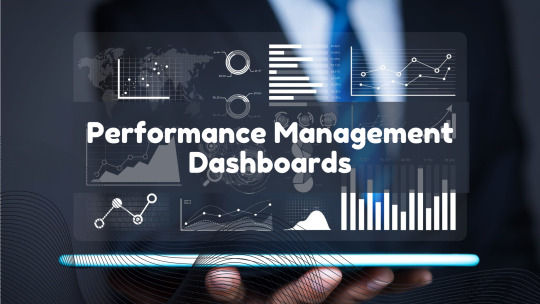
In today’s competitive business environment, the success of an organization hinges on the performance of its employees. Effectively managing and enhancing this performance is crucial, and one of the most powerful tools for achieving this is the performance management dashboard. These dashboards are transforming how companies monitor, evaluate, and improve employee performance, offering a comprehensive view of key metrics and facilitating informed decision-making.
Understanding Employee Performance Dashboard
Employee performance dashboard are digital tools that consolidate and display critical data related to employee performance. These dashboards provide real-time insights into various performance indicators such as productivity, efficiency, goal attainment, and more. By visualizing data in an accessible and organized manner, they help managers and employees alike understand performance trends, identify areas for improvement, and track progress over time.
Benefits of Employee Management Dashboard
Real-Time Data Accessibility
One of the most significant advantages of management dashboards is the ability to access real-time data to identify high-performance employees. Managers no longer need to wait for monthly or quarterly reports to assess performance. Instead, they can view up-to-the-minute data, enabling them to address issues promptly and capitalize on opportunities as they arise. This immediacy ensures that performance management is a continuous process, not a periodic activity.
Enhanced Decision-Making

management dashboards provide a holistic view of employee performance, aggregating data from various sources into a single interface. This comprehensive perspective allows managers to make well-informed decisions based on accurate and complete information. Whether it’s identifying top performers for recognition or pinpointing underperforming areas that need support, dashboards equip managers with the insights necessary to take strategic actions.
Goal Alignment and Tracking
Dashboards play a crucial role in aligning individual goals with organizational objectives. They enable managers and employees to set clear, measurable goals and monitor progress toward achieving them. By tracking performance against predefined targets, dashboards help ensure that everyone is working toward the same goals, fostering a sense of purpose and direction within the team.
Increased Transparency and Accountability
Performance dashboards promote transparency and accountability within the organization. When performance metrics are visible to both managers and employees, it creates a culture of openness and responsibility. Employees are more likely to take ownership of their performance when they can see how their efforts contribute to the overall success of the organization. This visibility also facilitates constructive feedback and regular performance reviews.
Identifying Training and Development Needs
By analyzing performance data, dashboards can highlight areas where employees may need additional training or development. For instance, if the dashboard reveals consistent underperformance in a particular task, managers can investigate further to determine if additional training or resources are required. This targeted approach to employee development ensures that training efforts are focused where they are needed most, maximizing their impact.
Implementing Workforce Management Dashboards

Define Key Performance Indicators (KPIs)
The first step in implementing a performance management is to define the Staff performance tracker & key performance indicators (KPIs) that are most relevant to your organization’s goals. KPIs are to be time-bound, relevant, measurable, achievable, and specific (SMART). Common KPIs include sales figures, customer satisfaction scores, project completion rates, and employee engagement levels.
Choose the Right Dashboard Software
Selecting the appropriate software is critical for the success of your management dashboard. The software should be user-friendly, customizable, and capable of integrating with existing systems. It should also provide robust data visualization options to present information clearly and effectively.
Train Managers and Employees
For a performance dashboard to be effective, both managers and employees must understand how to use it. Training sessions should be conducted to familiarize users with the dashboard’s features and functionalities. Additionally, ongoing assistance must to be offered to deal with any queries or problems that may come up.
Regularly Review and Update
Performance management is an ongoing process, and so is the use of dashboards. Regular reviews should be conducted to ensure that the KPIs remain relevant and that the dashboard continues to meet the organization’s needs. Updates and enhancements should be made as necessary to keep the dashboard aligned with evolving business objectives.
You can also watch: EmpMonitor: Manage Remote Work Easily
youtube
Final Verdict
Performance management dashboard is powerful tools that can significantly enhance employee performance and organizational success. By providing real-time data, enhancing decision-making, aligning goals, promoting transparency, and identifying development needs, these dashboards play a pivotal role in modern performance management practices. Organizations that leverage management dashboards effectively are well-positioned to foster a high-performance culture and achieve their strategic goals.
#performance management dashboard#performance dashboard examples#employee#performance dashboard#workforce management software#Youtube
0 notes
Text
In today’s digital era, where technology is deeply woven into the fabric of daily life, customer experience (CX) has become a critical factor for business success. With the rise of e-commerce, social media, and digital marketing, customers now have unprecedented access to information and a myriad of options at their fingertips. This shift necessitates that businesses place a strong emphasis on delivering exceptional customer experiences to foster loyalty, drive growth, and maintain a competitive edge.
In conclusion, customer experience is the cornerstone of business growth in the digital age. Companies that excel in CX will not only survive but thrive, enjoying increased customer loyalty, enhanced reputation, and greater profitability.
#performance management system#Business Management Software#performance management tool#Performance Tracker App#team performance management#work management software#employee attendance app
0 notes
Text
SWOT analysis for employees – Assess and boost workforce performance
In modern businesses with evolved workplaces, the need for performance evaluation and workforce encouragement is a continuous process. Business leaders are constantly looking for helpful approaches to promote a vibrant company culture, enhance employee engagement, and improve overall productivity at work. With critical business elements to be aligned, the worth of workforce management software…

View On WordPress
#boost workforce performance#Employee Engagement#enhance workforce efficiency#performance monitoring software#productivity management software#real-time monitoring tools#SWOT analysis for employees#Workforce Management Software
0 notes
Text
OneMonitar: Empowering Workplace Oversight
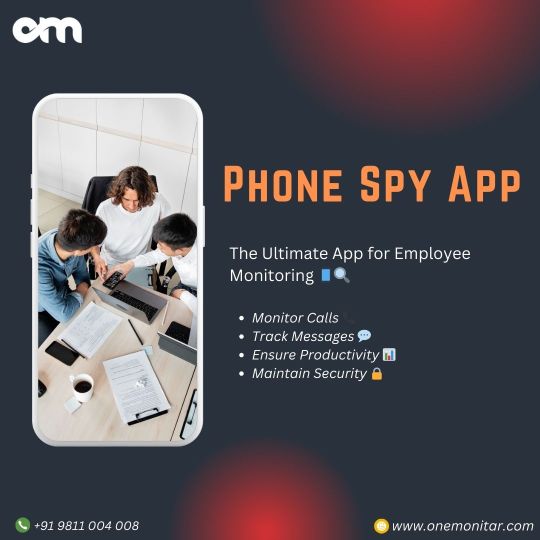
Unlock comprehensive employee monitoring with OneMonitar. Monitor calls, track messages, ensure productivity, maintain security, and utilize GPS tracking. Enhance workplace efficiency and accountability effortlessly.
#Employee surveillance tool#Workforce tracking software#Staff supervision application#Workplace behavior analysis platform#Team activity monitoring solution#Personnel performance management tool
0 notes
Text
Measuring Success: Employee Efficiency Metrics Demystified
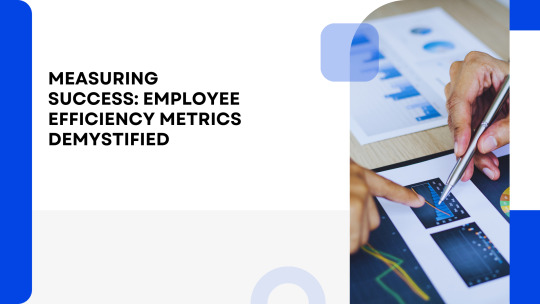
Measuring and optimizing employee efficiency has become imperative in the dynamic landscape of modern business. Understanding the key metrics that drive employee performance is crucial for businesses looking to enhance productivity and streamline operations. This article aims to demystify employee efficiency metrics, providing insights into performance measurement and the role of workforce management software in achieving optimal efficiency.
Why Measure Employee Efficiency?
Employee efficiency is a critical component of organizational success. By measuring efficiency employee metrics, businesses can identify areas for improvement, optimize workflows, and enhance overall productivity. Efficient employees not only contribute to the bottom line but also play a significant role in driving innovation and fostering a positive work culture.
Key Employee Performance Metrics
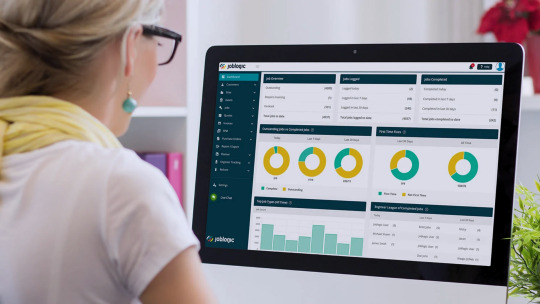
Productivity Rate: Productivity rate measures the output of employees relative to the input (time, resources) expended. It provides a holistic view of employee efficiency and is often used to identify high-performing individuals or teams.
Utilization Rate: Utilization rate measures the percentage of time that employees spend on productive work tasks. It helps identify potential bottlenecks and areas where employees may be underutilized.
Quality of Work: While productivity is important, the quality of work is equally crucial. Metrics such as error rates, customer satisfaction scores, and project success rates can help gauge the quality of work produced by employees.
Attendance and Punctuality: Regular attendance and punctuality are indicators of employee commitment and dedication. Monitoring these metrics can help identify potential issues and address them proactively.
Employee Engagement: Engaged employees are more likely to be efficient and productive. Metrics such as employee satisfaction scores, retention rates, and feedback can provide insights into employee engagement levels.
Role of Workforce Management Software
Workforce management software plays a pivotal role in measuring and improving employee efficiency. These tools offer features such as time tracking, task management, and performance analytics, providing businesses with real-time insights into employee performance. By leveraging workforce management software, businesses can optimize schedules, allocate resources efficiently, and identify areas for improvement.
Implementing Employee Efficiency Performance Metrics
Implementing employee efficiency measures requires a strategic approach. Here are some key steps to effectively measure and improve employee efficiency:
Define Clear Objectives: Clearly define the goals and objectives of measuring employee efficiency. Whether it's improving productivity, reducing costs, or enhancing customer satisfaction, having clear objectives will guide the selection of relevant metrics.
Select Appropriate Metrics: Choose metrics that align with your objectives and provide actionable insights. Consider a mix of leading indicators (e.g., employee engagement) and lagging indicators (e.g., productivity rate) to get a comprehensive view of employee efficiency.
Utilize Workforce Management Software: Leverage workforce management software to automate the collection and analysis of employee workforce project management software. These tools can streamline processes, reduce manual errors, and provide real-time insights into employee performance.
Communicate Metrics Effectively: Communicate the importance of employee efficiency versification to employees. Ensure they understand how these metrics contribute to the overall success of the organization and how their performance is being measured.
Provide Regular Feedback: Provide employees with regular feedback based on efficiency scansion. Recognize and reward high performers, and provide constructive feedback to those who may need improvement. It can help motivate employees and drive continuous improvement.
Identify and Address Challenges: Use efficiency metrically to identify challenges and areas for improvement. Whether it's inefficient processes, lack of training, or resource constraints, addressing these challenges can lead to significant improvements in employee efficiency.
Future Trends in Employee Efficiency Analytics
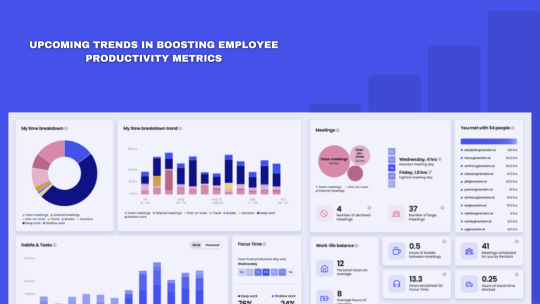
The future of employee efficiency metrics is likely to be shaped by advancements in technology and changing work dynamics. Some key directions to watch out for include:
Remote Work Monitoring: With the rise of remote employee time tracking work, there is a growing need for tools that can effectively monitor and measure employee efficiency in a remote setting. It includes tracking time spent on tasks, measuring output, and ensuring employees remain engaged and productive.
AI and Predictive Analytics: AI and predictive analytics can play a significant role in predicting employee efficiency trends and identifying areas for improvement. These technologies can analyze large datasets to provide actionable insights and recommendations.
Focus on Employee Wellbeing: Employee efficiency is closely linked to employee wellbeing. As such, there is a growing emphasis on measuring and improving employee wellbeing metrics, such as work-life balance, mental health, and job satisfaction.
Conclusion
Measuring employee efficiency is crucial for businesses looking to enhance productivity and drive success. By understanding key efficiency metrics and leveraging workforce management software, businesses can gain valuable insights into employee performance and take proactive steps to optimize workflows. Investing in employee efficiency not only benefits the bottom line but also contributes to a positive work environment and employee satisfaction.
#efficiency metrics#employee efficiency#employee efficiency metrics#performance metrics for employees#workforce management software
0 notes
Text
#payroll and benefits solutions#best leave management software#Employee Performance Management Software
0 notes
Text
Performance management software for organizations- Savvy HRMS
Analyze the performance of the employee and organization with help of a savvy hrms performance management system. Also, streamline the multiple appraisal process in a well-structured manner. You can track the individual performance of employees. Categorize the performance as underperformance,effective performance and outstanding performance employees and plan for the training accordingly

#employee performance management software#best performance management software#online performance management software#continuous performance management software
0 notes
Text

Unveiling The Advantages Of Implementing Performance Management Systems In Your Business
In this article, we will delve into the powerful benefits of integrating performance management systems into your business operations. By prioritizing clear goals, establishing transparent communication, and fostering a culture of continuous improvement, these systems can elevate your team's productivity and drive success. We will explore how implementing performance management systems can streamline performance evaluations, boost employee engagement, and ultimately optimize your business efficiency. Stay tuned as we unveil the key advantages of embracing this transformative approach to managing your workforce. Now, let's unlock the potential of your business with the strategic implementation of performance management systems.
- Introduction
Embark on a transformative journey for your business by unlocking the hidden potential within your workforce with the implementation of performance management systems. In today's fast-paced and competitive business landscape, organizations are constantly seeking ways to enhance efficiency and productivity. This article delves into the myriad benefits of integrating performance management systems into your business operations, offering insights into how this strategic approach can drive growth and success.
Discover how harnessing the power of performance management systems can revolutionize the way you manage and develop your employees, leading to increased engagement, improved performance, and ultimately, greater organizational success. Stay tuned to uncover practical strategies and valuable tips that will empower you to unleash the full potential of your team and propel your business toward unparalleled heights of achievement
To know more- https://realcoderz-us.blogspot.com/2024/03/unveiling-advantages-of-implementing.html
#Performance Management Systems#employee performance#employee engagement software#performance management software
0 notes
Text
So, you want to learn about the power of performance management in employee development, huh? Well, you’ve come to the right place! Buckle up, because we’re about to dive into this topic and explore the key points that make performance management oh-so-important. Performance management is a vital tool for any organization looking to maximize its employees’ potential. By setting clear expectations, identifying strengths and weaknesses, and providing constructive feedback, companies can create a roadmap for success.
#work management software#business management software#team performance management#best work tracking software#employee performance management tool#performance management system#team work management system
0 notes
Text
Level Up Your Game: How Performance Management Software Drives Success

Gone are the days of clunky spreadsheets and dusty paper files. Nowadays, thriving organizations don't just manage performance – they turbocharge it. And the secret weapon in their arsenal? Performance management software.
Forget the image of rigid annual reviews. This is about unlocking real-time feedback, fostering continuous growth, and empowering your team to reach their full potential. Imagine a platform that seamlessly connects goal setting to progress tracking, fuels meaningful conversations, and equips leaders with data-driven insights to make strategic decisions.
This isn't just wishful thinking – it's the reality within reach. Our guide dives deep into the transformative power of the management software. We'll explore how it can:
Boost employee engagement by fostering open communication and celebrating achievements.
Align individual goals with overall objectives, creating a clear path to success for everyone.
Revolutionize feedback by enabling continuous, two-way conversations that drive improvement.
Ready to ditch the outdated methods and step into a world of empowered employees, data-driven decisions, and continuous growth? Join us on this journey to unlock the full potential of your team and experience the game-changing impact of the management software. Let's level up your game, together!
What Is Performance Management Software?
This software revolutionizes how businesses assess and enhance their workforce's productivity. This comprehensive tool streamlines the process of monitoring, evaluating, and improving employee performance, leading to enhanced organizational success.
It is a sophisticated digital solution designed to facilitate the seamless management of employee performance within an organization. It encompasses various tools and features aimed at optimizing the performance evaluation process and fostering continuous improvement.
Performance Evaluation
Effective performance evaluation is pivotal in driving organizational growth. The management software simplifies this process by providing a centralized platform for setting goals, conducting assessments, and providing feedback. It enables managers to track employee progress, identify areas for improvement, and recognize outstanding performance promptly.
How Employee Performance Management Software Drives Success?
Streamlined Workflow: By automating repetitive tasks such as scheduling reviews and sending reminders, PMS frees up valuable time for managers to focus on strategic initiatives.
This newfound efficiency not only boosts productivity but also allows managers to delve deeper into analyzing performance trends and devising strategies for long-term success. Also you may use the employees monitoring software to keep an eye on your employees.
Data-Driven Insights: PMS provides actionable insights based on comprehensive performance data, enabling informed decision-making and targeted interventions to address areas for improvement.
By aggregating data from various sources, including employee evaluations, project outcomes, and feedback mechanisms, PMS offers a holistic view of individual and team performance.

Enhanced Communication: With features like 360-degree feedback and performance journals, PMS facilitates regular, constructive dialogue between managers and employees, fostering a culture of transparency and collaboration.
Through open channels of communication, employees receive timely feedback on their performance, allowing them to course-correct and grow professionally.
Goal Alignment: PMS ensures alignment between individual goals and organizational objectives, fostering a sense of purpose and direction among employees.
By cascading organizational goals down to individual level objectives, PMS creates a clear roadmap for employees, enabling them to understand how their contributions directly impact the company's overarching goals.
Also Watch: Leading Employee Engagement and Workforce Productivity Tool
youtube
Ending It Up!
In conclusion, Performance management software is a game-changer for businesses seeking to elevate their performance and drive success. By leveraging this powerful tool, organizations can streamline their performance evaluation processes, empower their employees to reach their full potential, and foster a culture of continuous improvement.
Moreover, with the ability to track key performance indicators and metrics in real-time, businesses can make data-driven decisions that drive efficiency and productivity. Additionally, by integrating the management software with their inbound marketing strategies, organizations can create personalized experiences for their target audience, nurture leads effectively, and build strong, lasting relationships with customers.
This synergy between performance management and inbound marketing not only enhances customer engagement but also boosts brand reputation and loyalty in the long run. Ultimately, investing in performance management software is not just about managing performance—it's about propelling your business towards sustainable growth and prosperity in today's competitive landscape.
#Performance Management Software#Management Software#performance management system#performance evaluation#employee#Youtube
0 notes